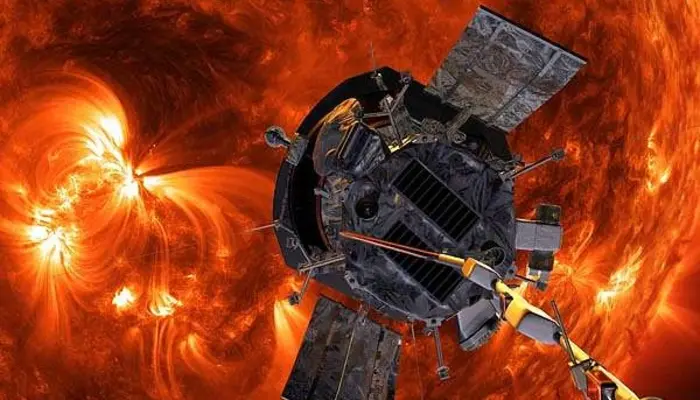NASA’s Parker Solar Probe, a groundbreaking mission to explore the Sun, has successfully completed its closest approach to the solar surface. Eight days after its historic flyby on December 24, 2024, NASA confirmed that the spacecraft’s systems and scientific instruments remain in excellent condition. This milestone adds to the mission’s growing legacy, offering unprecedented insights into the Sun’s activity and mysteries.
A Record-Breaking Solar Encounter
During its latest orbit, Parker Solar Probe broke previous records by venturing closer to the Sun than ever before. The spacecraft entered the outermost layers of the Sun’s atmosphere, called the corona, enduring extreme temperatures and intense radiation. Despite these harsh conditions, the probe’s systems performed flawlessly, and it successfully collected valuable scientific data during the flyby.
NASA reported that Parker’s instruments continued to operate normally throughout its closest approach, ensuring uninterrupted data collection. However,The success of this mission phase demonstrates the spacecraft’s resilience and engineering excellence.
Read: Kick Off 2025 with a Meteor Shower, an Eclipse, and Venus
Scientific Goals and Achievements
The Parker Solar Probe aims to answer long-standing questions about the Sun. Key objectives include understanding the origins of solar wind, explaining the Sun’s unusually high corona temperatures, and uncovering the mechanisms behind solar storms. By traveling closer to the Sun than any previous spacecraft, Parker Solar Probe can collect high-resolution data critical to advancing solar science.
The data gathered during the December 24 flyby is expected to offer fresh perspectives on solar dynamics. Scientists anticipate new insights into how the Sun influences space weather, which can impact satellites, communications, and power grids on Earth.
Engineering a Mission to the Sun
The success of Parker Solar Probe hinges on its innovative design. The spacecraft features a heat shield that can withstand temperatures exceeding 2,500 degrees Fahrenheit, ensuring its instruments remain functional. Its autonomous systems enable real-time decision-making, allowing it to navigate the Sun’s harsh environment safely.
Parker Solar Probe has already completed multiple solar encounters, each bringing it progressively closer to the Sun. These missions have provided critical data on solar wind and magnetic fields, paving the way for more breakthroughs in the coming years.
Looking Forward
With its instruments operating at peak performance, Parker Solar Probe continues to advance our understanding of the Sun. Scientists eagerly await the analysis of the data from this record-setting flyby, which promises to enhance our knowledge of the Sun’s behavior and its impact on the solar system. In conclusion The Parker Solar Probe’s achievements stand as a testament to NASA’s dedication to pushing the boundaries of exploration.
Follow us on Google News, Instagram, YouTube, Facebook,Whats App, and TikTok for latest updates
